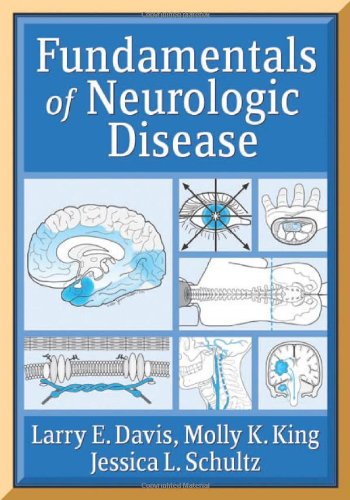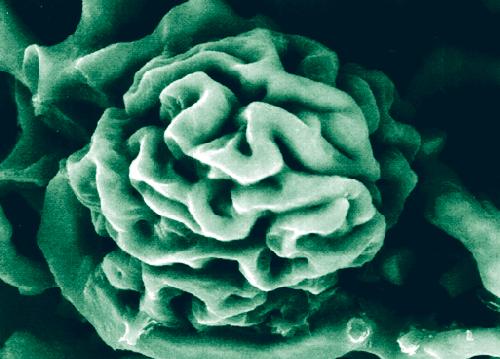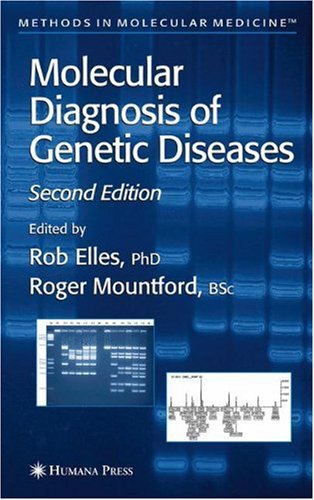Larry E. Davis, Molly K. King, Jessica L. Schultz9781888799842, 9781934559178, 1888799846
Table of contents :
Cover Page……Page 1
Title Page……Page 3
ISBN 1888799846……Page 4
7 Disorders of the spinal cord and vertebral bodies……Page 5
13 Central nervous system infections……Page 6
19 Neurologic complications of alcoholism……Page 7
21 Disorders of the vestibular system……Page 8
Preface……Page 9
Acknowledgments……Page 11
Foreword……Page 13
1 APPROACH TO THE PATIENT WITH A NEUROLOGIC PROBLEM……Page 15
2. Determine an Anatomic Localization……Page 16
6. Order Appropriate Laboratory and/or Neuroimaging Tests……Page 17
8. Begin Appropriate Etiologic and Symptomatic Treatment……Page 20
Mental Status Examination……Page 23
Cranial Nerve Examination……Page 24
Motor Examination……Page 27
Reflexes……Page 30
Pediatric Neurologic Exam……Page 33
This page intentionally left blank……Page 36
Functional Neurologic Tests……Page 37
Structural Neurologic Tests……Page 43
Neuroimaging Tests……Page 48
Molecular/Genetic Neurologic Tests……Page 50
Overview……Page 53
Duchenne Muscular Dystrophy (Muscular dystrophies)……Page 54
Dermatomyositis (Inflammatory myopathy)……Page 58
Primary Hyperkalemic Periodic Paralysis (channelopathies)……Page 59
Myasthenia Gravis……Page 63
Botulism……Page 67
Pathophysiology……Page 71
Diabetic Distal Symmetrical Polyneuropathy……Page 72
Carpal Tunnel Syndrome……Page 75
Bell’s Palsy……Page 77
Overview……Page 81
Amyotrophic Lateral Sclerosis……Page 82
Transverse Myelitis and Myelopathy……Page 87
Low Back Pain with Radiculopathy……Page 88
Overview……Page 93
Lateral Medullary Infarction (Wallenberg Syndrome)……Page 95
Spinocerebellar Ataxia (SCA 1)……Page 98
Ischemic Strokes (Embolic and Lacunar)……Page 101
Transient Ischemic Attacks……Page 107
Spontaneous Intracranial Hemorrhage……Page 108
Saccular Aneurysms……Page 110
Myelin……Page 115
Multiple Sclerosis……Page 116
Guillain-Barré Syndrome……Page 119
Overview……Page 123
Limbic System……Page 124
Parietal Lobe……Page 125
Aphasias……Page 127
Neurologic Changes of Normal Aging……Page 129
Dementia……Page 130
Alzheimer’s Disease……Page 131
Mental Retardation……Page 134
Overview……Page 137
Essential Tremor……Page 138
Parkinson’s disease……Page 140
Huntington’s Disease……Page 144
Overview……Page 147
Bacterial Meningitis……Page 148
Brain Abscess……Page 151
Herpes Simplex Virus Encephalitis……Page 153
Prion Diseases……Page 155
Brain Herniation Syndromes……Page 159
Cerebral Edema……Page 160
Glioblastoma Multiforme— Malignant Astrocytoma……Page 161
Meningioma……Page 163
Pituitary Adenoma……Page 164
Cerebral Metastases……Page 166
Etiologies of Seizures……Page 169
Primarily Generalized Tonic–Clonic Seizures and Secondarily Generalized Partial Seizures (Grand Mal Seizure)……Page 170
Absence Seizure (Petit Mal Seizure)……Page 172
Infantile Spasms (West’s Syndrome)……Page 173
Complex Partial Seizure (Localization-Related, Temporal Lobe, or Psychomotor Seizure)……Page 174
Status Epilepticus……Page 175
Coma……Page 179
Cerebral Death……Page 185
Overview……Page 187
Anencephaly……Page 188
Chiari Type I and II Malformations……Page 190
Phenylketonuria (PKU; Phenylalanine Hydroxylase [PAH] Deficiency)……Page 192
Tay-Sachs Disease (Hexosaminidase A Deficiency)……Page 193
Down Syndrome……Page 195
Traumatic Brain Injury……Page 199
Chronic Subdural Hematoma……Page 204
Overview……Page 207
Alcoholic Tremulousness and Hallucinosis……Page 208
Wernicke’s Encephalopathy and Korsakoff ’s Psychosis Syndrome……Page 209
Alcoholic Cerebellar Degeneration……Page 210
Fetal Alcohol Syndrome (FAS)……Page 212
Pain……Page 215
Headache Pain……Page 216
Tension-Type Headache……Page 217
Migraine Headache……Page 218
Overview……Page 223
Benign Paroxysmal Positional Vertigo……Page 226
Meniere’s Disease……Page 229
Glossary of Common Neurologic Terms……Page 233
B……Page 241
C……Page 242
D……Page 243
G……Page 244
K,L……Page 245
M……Page 246
N,O,P……Page 247
T……Page 248
U,V,W……Page 249







Reviews
There are no reviews yet.